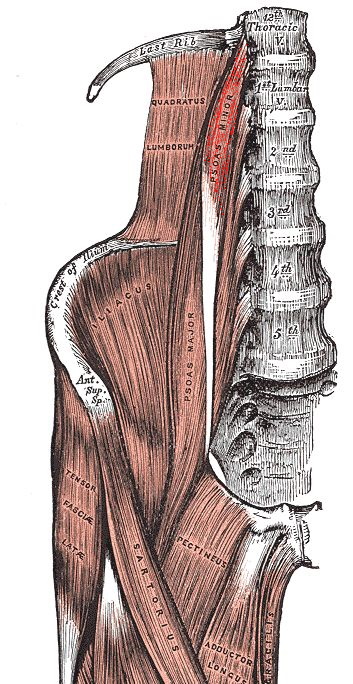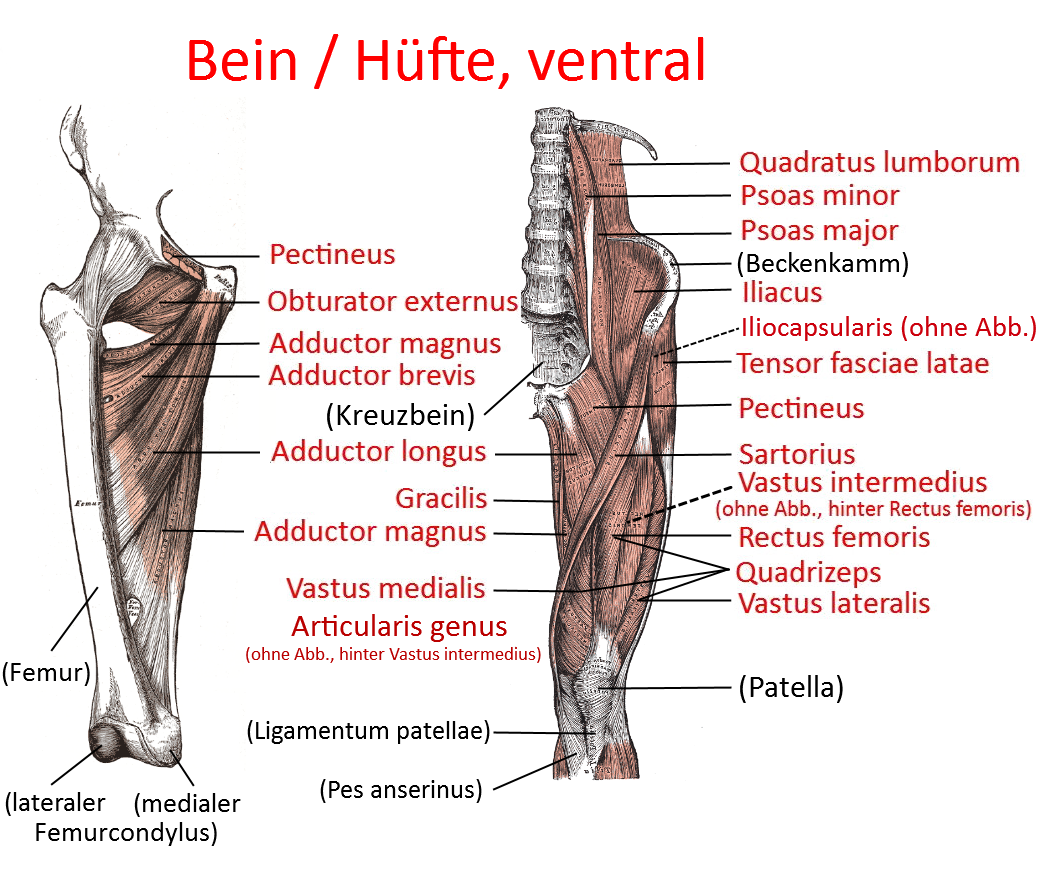yogabook / muscles / psoas minor

Linkmap

M. psoas minor
the lesser psoas, a synergist to the greater psoas with regard to lateral flexion and inclination of the lumbar spine, which only attaches to the 12th thoracic vertebra, the underlying intervertebral disc and possibly the 1st lumbar vertebra; it is only pronounced in 30%-50% of people. The muscle is not always bilateral; it is often unilateral. It can then be partly responsible for the development of scoliosis. In cases where it attaches to the linea pectinea of the femur, it is a complete but independent synergist of the psoas major and is sometimes responsible for psoas minor syndrome in the event of contracture. Rarely there is also a psoas acessorius, which arises from a tendon of origin of the psoas minor and belongs to the
eminentia iliopectinea and the
pecten ossis pubis.
Origin: 12th thoracic and 1st lumbar vertebrae
Attachment: with arcus iliopectineus and eminentia iliopubica of the pubic bone. In a number of cases it attaches to the femur, which makes it an independent synergist of the psoas major.
Innervation: Rami anteriores of the spinal nerves L1-L3
Antagonists:
Movement: In contrast to the psoas major, the psoas minor does not support flexion in the hip joint if it does not attach to the femur, but with its attachment to the ventral pubis it flexes the lumbar spine (with bilateral innervation) or laterally flexes it. In terms of lateral flexion, both psoas muscles are therefore synergistic. When attached to the femur, it is also a hip flexor.
